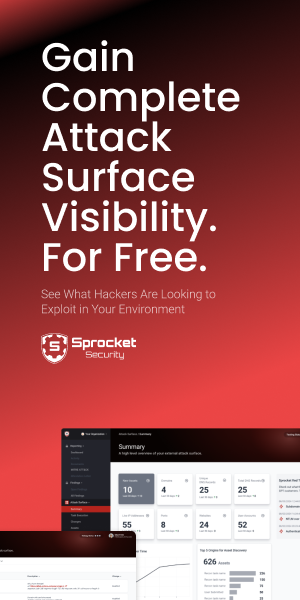Protecting an organization against cyberattacks is becoming more challenging these days as attack surfaces grow exponentially and attackers increase the sophistication of their tactics. Even one breach can cost upwards of $4.88 million in monetary damages, and stolen customer data or company IP can result in priceless additional damages. To stay ahead, security teams must shift from reactive response to proactive defense. But how do you protect assets you don't even know exist?
This is where Attack Surface Management (ASM) comes in. ASM allows a security team to continuously discover, monitor, and assess all of their exposed assets—internal and external—and prioritize remediation based on real-world risk. Paired with Continuous Penetration Testing (CPT) and those exposed assets are validated in real-time, helping organizations stay ahead of rapid changes across dynamic environments. ASM also forms the foundation of a strong Continuous Threat Exposure Management (CTEM) approach focused on reducing organizational exposure over time.
But ASM alone isn't enough. To truly think and act like an attacker, you must integrate threat intelligence into your ASM practices. In this blog post, we summarize the key insights from our comprehensive white paper, A Practical Guide to Using Threat Intelligence for Better Attack Surface Management. Read on for actionable strategies to enhance your ASM approach with threat intelligence, or download the full white paper for an in-depth analysis.
The Ever-Expanding Attack Surface
Modern organizations face several challenges that contribute to an increasingly complex attack surface, including:
Testing in Shared or Hosted Infrastructure: Many organizations use at least some cloud service or shared/hosted infrastructure and they may have direct responsibility for the data secured within them. Yet they might not be able to authorize a security test against these resources. For pentesters, this creates a blind spot—how do you effectively assess security posture when critical infrastructure components are off-limits? As Michael Belton, Head of Service Delivery at Sprocket, points out, "From an attacker's perspective, public-facing cloud environments are an ever-shifting target that emphasizes the need for accurate targeting data."
Dependency Complexity: Modern SPAs can carry massive dependency trees due to frameworks like React, Vue, or Angular. Each update introduces potential vulnerabilities in nested libraries, and pentesters consistently discover outdated or unpatched modules hidden several layers deep. For offensive security professionals, these nested dependencies represent a goldmine of potentially exploitable vectors that are often overlooked by automated scanning tools.
Growing Supply Chain Complexity: An organization’s attack surface isn’t just the assets that are unique to their organization, but extends to their supply chain as well. Gartner estimates that nearly half of organizations have experienced attacks on their supply chain, three times the amount from 2021.
Microservices and API Proliferation: Shifting to microservices can exponentially increase an application's footprint. Each service may have its own stack (Node.js, Python, Go), with configurations often left to individual teams. This fragmentation complicates ASM as new endpoints appear rapidly and are sometimes forgotten.
Client-Side Data Exposure: SPAs tend to offload significant logic and data into the client layer for seamless user experiences. However, there are often secrets or environment details in minified scripts or accessible source maps, which can be trivially reversed.
CI/CD Misconfigurations: CI/CD systems are a prime target because they often store the keys to production environments. Misconfigurations like storing credentials in plain text environment variables or failing to scrub logs enable attackers to harvest secrets quickly.
Traditional Systems Management: Beyond the sophistication at the application layer, fundamental system security concepts remain crucial. As Nick Aures, Senior Penetration Tester at Sprocket, puts it: "At Sprocket Security, we routinely identify systems that expose remote access services, database services, infrastructure services, and more."
Beyond Basic Asset Discovery
Traditional ASM provides critical asset visibility, but too often security teams stop at discovery without using this intelligence effectively. For effective security outcomes, teams must go beyond asset discovery and focus on how exposed systems evolve, where risks emerge, and how changes in infrastructure map to potential attacker entry points.
Juan Pablo Gomez P., Senior Penetration Tester at Sprocket, explains: "ASM enables penetration testers to identify and remediate risks before attackers can exploit them. By continuously monitoring the external environment, we [testers] uncover and report critical vulnerabilities—often before organizations are even aware these assets are part of their infrastructure."
Making Threat Intelligence Actionable
Threat intelligence transforms raw asset data into prioritized security insights. While ASM tools provide the "what" (your exposed assets), threat intelligence delivers the crucial "who," "how," and "why" that offensive security practitioners need to think like attackers. There are three key types of threat intelligence that enhance ASM effectiveness:
Strategic Intelligence
Strategic CTI provides a broad understanding of the current threat environment and should inform decisions around governance, resource allocation, and operational priorities. It encompasses:
Threat actors, their motivations, and historical behaviors
Technical trends that change the attack surface
Industry-specific threat patterns
Geopolitical context that might influence threats
When applied to ASM, strategic intelligence helps your team understand who might be targeting your assets and why, allowing for more effective prioritization based on the real-world threat landscape.
Operational Intelligence
Operational CTI delivers actionable insights into ongoing cyber threats. It supports detection, incident response, and security tool optimization through:
IoCs for threat detection
TTPs used by attackers
Vulnerability and exploit intelligence
Campaign context to assess active threats
For pentesters, operational intelligence enables you to focus your testing efforts on the most likely attack scenarios and vectors that threat actors are actively exploiting.
Tactical Intelligence
Tactical intelligence provides immediate insights into specific threats. It focuses on:
Specific IoCs for rapid detection
Adversary tools and techniques
System and network vulnerabilities requiring urgent patching
Active attack patterns for prioritized response
Tactical and operational CTI helps security teams rapidly respond to threats by providing the technical details needed to detect and mitigate attacks.
Enhancing ASM with Threat Intelligence
When you combine threat intelligence and ASM effectively, you enhance, not complicate, existing workflows. Here’s how to leverage this combination:
Enhance Vulnerability Management
By synthesizing attack surface, threat intelligence, vulnerability management data, organizations can:
Prioritize remediation activities based on exploitability
Create context for vulnerabilities
Enhance threat detection and prevention
Improve incident response
Create a more predictive vulnerability management approach
Reduce false positives
Provide continuous feedback for adaptive defense
Increase Pentesting Effectiveness
For pentesters, combining threat intelligence with ASM data allows for more targeted and realistic attack simulations—transitioning from "finding everything" to "finding what matters most." This approach significantly improves testing ROI by:
Focusing testing efforts on high-risk assets or vulnerabilities that threat actors are actively targeting
Modeling tests after current attacker TTPs to validate defensive controls
Simulating the most likely attack paths based on an organization's specific threat profile
Eliminating hours wasted on reconnaissance and immediately pivoting to validation and exploitation
Combining CTI and ASM with CPT takes this even further. CPT integrates seamlessly by testing high-risk assets and attack paths revealed by threat intel. Ensuring pentesters enhance the relevance, scope, and impact of testing to focus on real-world threats and critical assets. This approach integrates seamlessly into existing offensive security methodologies while dramatically improving efficiency.
Conclusion
Instead of rushing to exploit, hackers tend to spend most of their time doing reconnaissance on an organization so they can find the right place to exploit. But with a powerful dataset kept fresh inside an ASM platform, security teams can use threat intelligence to tell them what is vulnerable and where attackers are looking to target.
Threat intelligence provides you with a method for qualifying your ASM data by allowing you to understand what exposures are the most susceptible to threats based on tactics and targeting. This marriage can shape where resources should be spent to mount the most efficient and effective defense.
Ultimately, the greatest value to integrating threat intelligence into ASM is having access to the same intelligence that attackers who are targeting your organization have access to already—and staying one step ahead of them.
To dive deeper into these concepts and learn practical implementation strategies, download the full white paper today.
Interested in how Sprocket can help your organization implement effective ASM enhanced with threat intelligence? Learn more about Sprocket’s no-cost ASM platform.



